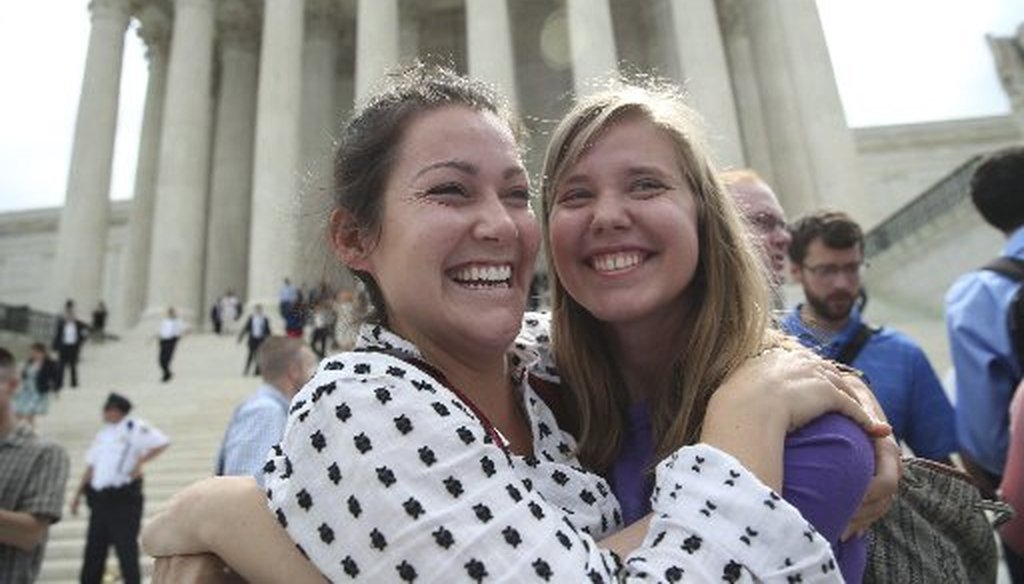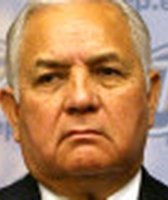Stand up for the facts!
Our only agenda is to publish the truth so you can be an informed participant in democracy.
We need your help.
I would like to contribute

Celebrants outside the U.S. Supreme Court building after the court upheld legality of same-sex marriage June 26, 2015. Texas voters defined marriage as between one man and one woman in a November 2005 vote (New York Times photo, Doug Mills).
SEE POLITIFACT'S FACT CHECKS RELATED TO MARRIAGE HERE.
READ ABOUT THE COURT'S RULING, AND TEXAS IMPLICATIONS, HERE.
In November 2005, 76 percent of Texas voters approved a proposed amendment to the Texas Constitution defining marriage as between one man and one woman.
Supporters of legalizing same-sex marriage--which the U.S. Supreme Court upheld today--sometimes say the Texas vote didn't reflect the sentiment of all voters--only the ones who made it to the polls.
Of course, it's true for any election that the results reflect who voted.
The 2005 Texas vote occurred a year after 11 other states amended their respective constitutions to define marriage as one-man, one-woman. Texas voters faced the issue after the Republican-led Legislature, with support from Gov. Rick Perry, voted earlier in the year to place the proposal on the ballot. Legislators had placed similar language defining marriage into state law in 2003.
That August, Perry said in an email blast to voters: "Marriage is the union between a man and a woman is a truth known to each one of us already, and any attempt to allow same-sex marriages is a detriment to the family unit and hurts our state and nation."
Before voters went to the polls, more than 20 Austin-area elected officials including the city's mayor, Will Wynn, and Travis County Judge Sam Biscoe announced their opposition to the amendment. State Rep. Elliott Naishtat, D-Austin, said the proposal to amend the constitution arose from the Republican-majority Legislature this year out of "arrogance (and) mean-spiritedness."
A few days later, about 30 church leaders from Central Texas -- some speaking Spanish, some from predominantly black churches -- urged Texans to look at the Bible before going to the ballot box. The pastors urged Texans to support the traditional definition of marriage between one man and one woman, pointing out that the Bible describes marriage that way. "According to the word of God, marriage was designed for a man and a woman, " said Dante Wright, the senior pastor of Sweet Home Baptist Church in Round Rock.
On Nov. 8, 2005, 76 percent of the state's votes were cast in favor of Proposition 2, the marriage amendment, then making Texas the 19th state to insert the definition in its constitution. That result occurred with 18 percent of registered voters turning out.
"That's overwhelming. We could have gone home and sat down and still won, " then-state Rep. Warren Chisum, R-Pampa, author of the amendment, said as he watched the election returns.
Footnote: A majority of voters in only one of the state's 254 counties opposed the measure. Sixty percent of the voters in Travis County, home to the capital, said "no;" turnout in the county amounted to 25 percent of its registered voters.
Our Sources
SEE POLITIFACT'S FACT CHECKS RELATED TO MARRIAGE HERE.
READ ABOUT THE COURT'S RULING, AND TEXAS IMPLICATIONS, HERE.









































